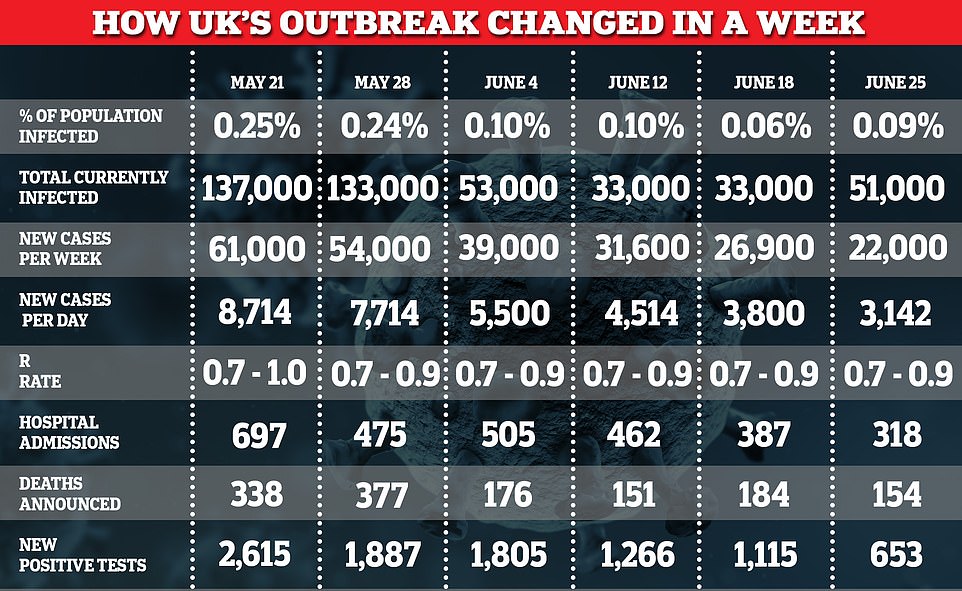Britain announces 149 more coronavirus deaths — taking the total number of victims to 43,230 as the UK’s outbreak continues to fizzle out for now
- Department of Health chiefs say the laboratory-confirmed coronavirus death toll now stands at 43,230
- But other grim figures that take into account suspected deaths show the tally topped 50,000 weeks ago
- 154 deaths were posted yesterday and 137 last Thursday, meaning the toll has risen slightly week-on-week
- Government data also showed 1,118 more cases were diagnosed after yesterday’s three-month low of 653
Britain today announced 149 more Covid-19 deaths as the outbreak that has plagued the nation for three months continues to retreat.
Department of Health chiefs — who also recorded 1,118 more cases of the disease — say the laboratory-confirmed death toll now stands at 43,230 since the first victim was recorded at the start of March.
But other grim figures that take into account every suspected death shows the actual tally topped 50,000 several weeks ago. Other data shows 65,000 ‘excess’ deaths have been recorded since the crisis began.
Just 154 deaths were posted yesterday and 137 last Thursday, meaning the daily toll has jumped slightly week-on-week. But the rolling seven-day average is down to 119 — down from 945 during the height of the outbreak.
In other coronavirus developments in Britain today:
- Between 1,900 and 3,200 people are catching the coronavirus every day in England, according to data from King’s College London and the Office for National Statistics;
- The R rate of the coronavirus in England could be higher than the dreaded number of one, according to a leaked government document — but health chiefs insisted the figure was still between 0.7 and 0.9;
- Fewer than half of people in England referred to NHS Test and Trace after testing positive for coronavirus have given any details of their close contacts, shocking data revealed;
- A rail union leader warned of a national strike unless the Government gives ‘unequivocal assurances’ that the social distancing rules across the transport network will remain at two metres;
- Councils begged the Government for more cash to stave off bankruptcy – with Manchester facing a £166m loss and Wiltshire smarting from a £51m shortfall even after emergency funding was taken into account;
- More than half a million criminal cases have been delayed from being heard in court because of the coronavirus pandemic – with the backlog expected to last until Easter.
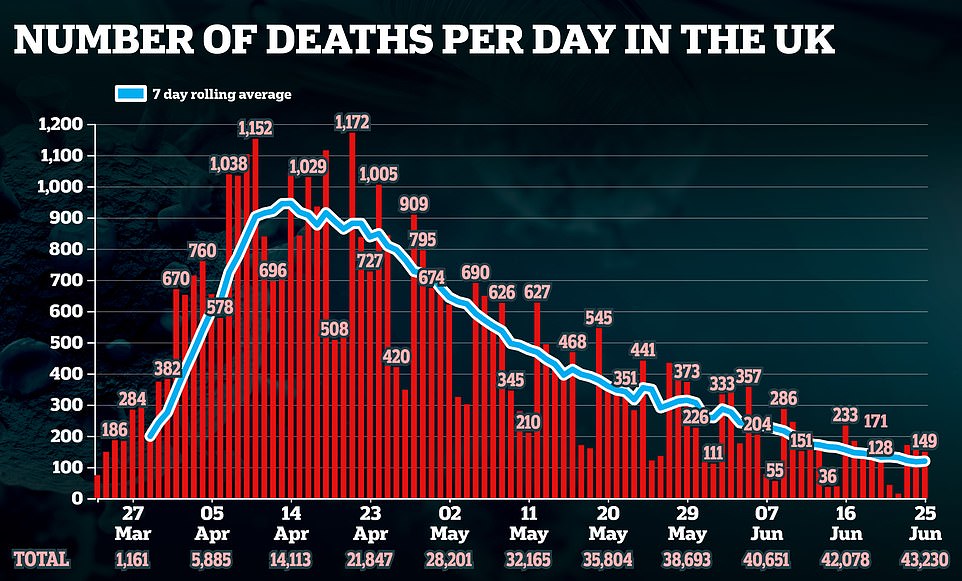

Department of Health data released yesterday showed 232,086 tests were carried out or posted the day before — the second-highest daily figure. The number includes antibody tests for frontline NHS and care workers.
But bosses again refused to say how many people were tested, meaning the exact number of Brits who have been swabbed for the SARS-CoV-2 virus has been a mystery for a month — since May 22.
Health chiefs also reported 653 more cases of Covid-19, the fewest recorded in any day since before lockdown was imposed. Just 643 people tested positive for the life-threatening virus on Thursday, March 19.
The daily death data does not represent how many Covid-19 patients died within the last 24 hours — it is only how many fatalities have been reported and registered with the authorities.
The data does not always match updates provided by the home nations. For example, the Scottish government last Thursday announced two deaths – but the DH recorded nine north of the border.
Department of Health officials work off a different time cut-off, meaning daily updates from Scotland as well as Northern Ireland are always out of sync. Wales is not thought to be affected.
And the count announced by NHS England every afternoon — which only takes into account deaths in hospitals — does not match up with the DH figures because they work off a different recording system.
For instance, some deaths announced by NHS England bosses will have already been counted by the Department of Health, which records fatalities ‘as soon as they are available’.
NHS England today reported 55 more victims in hospitals across the country. Wales recorded six victims in all settings, followed by two in Scotland and zero in Northern Ireland.

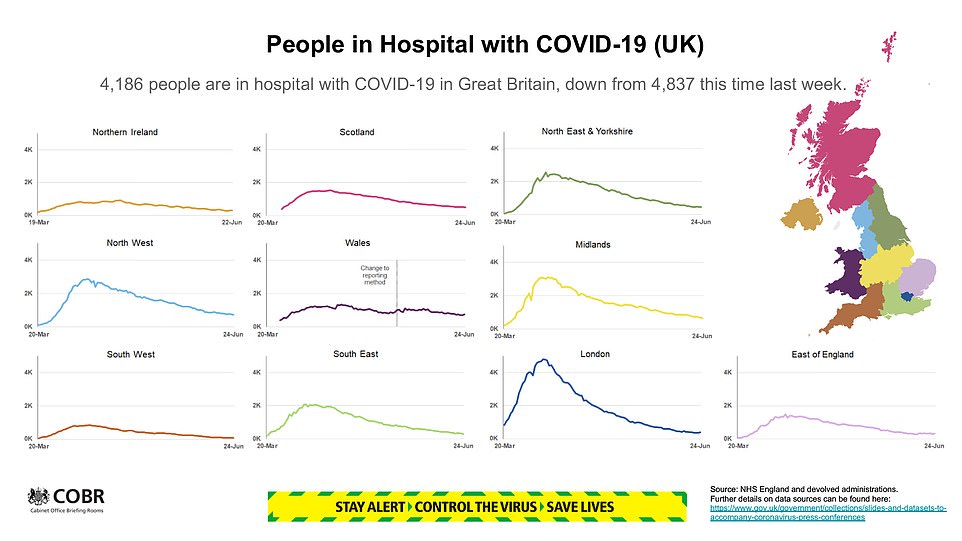






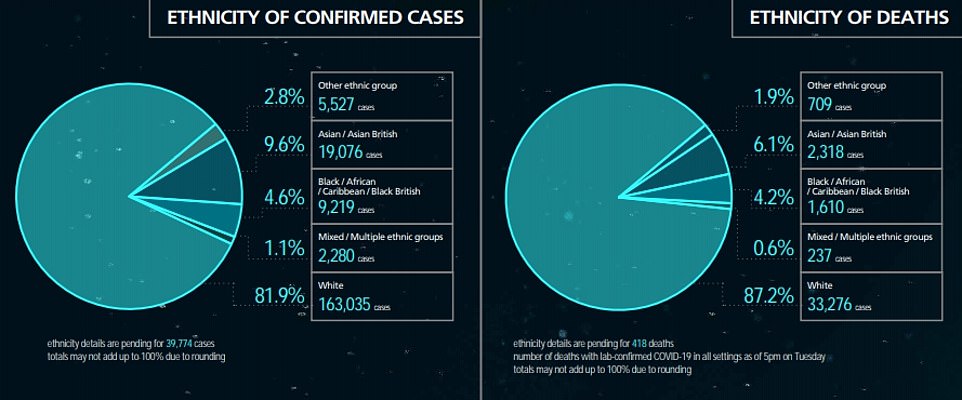
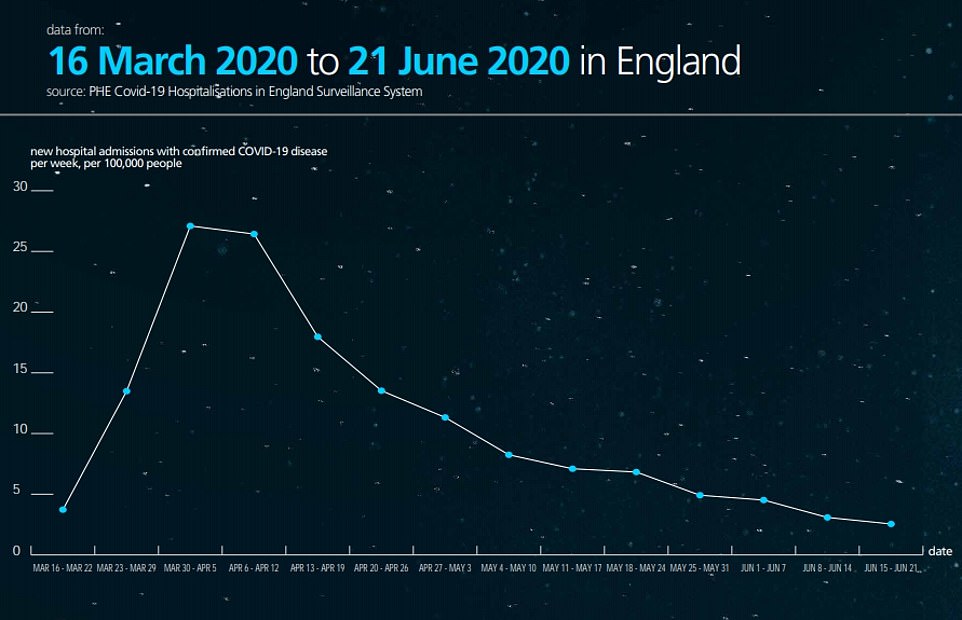
It comes as a leaked government document today warned the R rate of the coronavirus in England could be higher than the dreaded number of one — but health chiefs today insisted the figure was still between 0.7 and 0.9.
Keeping the rate below one is considered key to easing lockdown because it means the outbreak is shrinking as not everyone who catches it passes it on.
If the figure rises higher, it means people infected with the virus are spreading it to others at a rate faster than one-to-one, which could see the disease spiral out of control once again.
A document from Public Health England, seen by the HuffPost , showed PHE admitted there is ‘uncertainty’ about the number, which is always an estimate and not actually measurable.
Government advisers today claimed the R rate for the UK and England remains between 0.7 and 0.9 for the third week in a row. But they admitted it could be as high as 1.0 in the North West.
Number 10’s scientific advisory panel SAGE today also revealed the growth rate — how the number of new daily cases is changing day-by-day — is still between minus four and minus two per cent.
Between 1,900 and 3,200 people are catching the coronavirus every day in England, according to other data released today by King’s College London and the Office for National Statistics.
The estimates are taken from King’s College’s COVID Symptom Tracker app, which predicts 1,978 people in England catching the virus, and population swab testing by the ONS which put the figure at approximately 3,142.
Both estimates are down from last week, when the figures were between 3,300 and 3,800 – but ONS statisticians warned the shrinking of England’s outbreak has levelled off.
It thinks the total number of people with Covid-19 at any given point has risen in the past fortnight from around 33,000 on June 12 to 51,000 today, June 25.
King’s College London ‘s COVID Symptom Tracker app estimates that just 2,341 Britons are being struck down with the coronavirus every day. Last week they used this data to estimate that there were 3,612 people catching the virus every day in Britain and roughly 4,942 people the week before that. The figure was higher than 11,000 per day a month ago
It comes after Boris Johnson this week dramatically unwound the coronavirus lockdown, bringing the country out of ‘hibernation’ — with a return for pubs, haircuts and weddings and family and friends getting the green light to meet up indoors for the first time in months.
The Prime Minister said he wanted to ‘make life easier’ after an ‘incredibly tough time’ with bars, restaurants, cinemas and hairdressers in England able to get back up and running from July 4 – dubbed ‘Super Saturday’.
Separate figures released today showed fewer than half of people referred to NHS Test and Trace after testing positive for coronavirus have given any details of their close contacts.
Of the 20,968 people assigned to England’s 25,000 contact tracers, only 10,058 have actually given information that the tracers could follow up (48 per cent).
In its report this week, the Department of Health said the people who were unable to give contact details were ones who had only come into contact with complete strangers, such as on the bus.
The staggering number suggests that an app – which automatically links people’s phones so it can alert people who don’t know one another – may be necessary for contact tracing to work perfectly.
From the infected people who have been successfully contacted themselves, two thirds of them were able to give details of one or more close contacts.
Between June 17 and the system’s launch at the start of the month, 15,225 confirmed coronavirus patients have been successfully reached by contact tracers.
But more than one in three – 5,167 people – were ‘not able’ to give details of a single person they may have come into close contact with. A further 5,062 people who tested positive could not be reached at all by contact tracers – who phone, text and email someone 10 times a day to get hold of them.
Today’s update revealed that a total of 134,893 people – people who have tested positive, and their contacts – have been in touch with NHS Test and Trace in three weeks.
One scientist said the statistics today were ‘worrying’ and could only be solved with better co-operation from the public – not by the Government.

